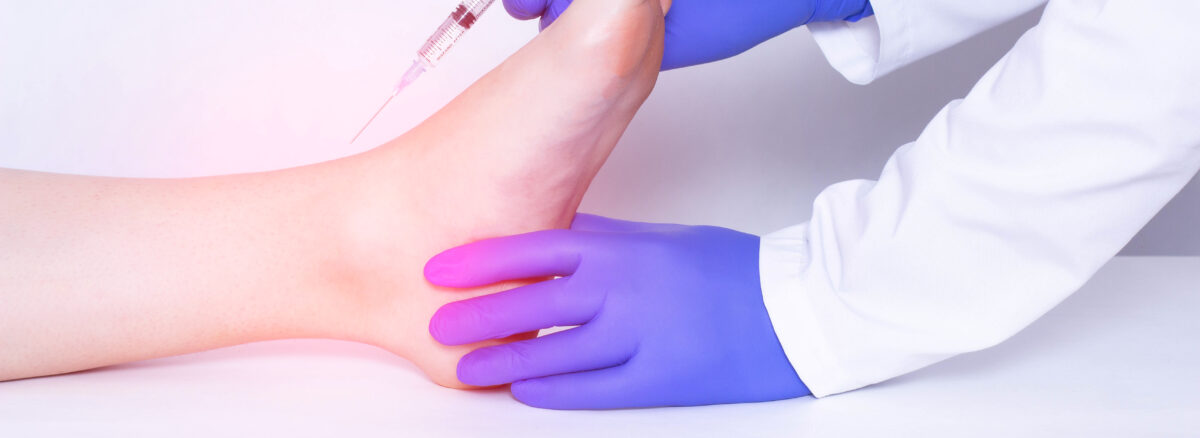Corticosteroid Injections in Podiatry: A Potent Tool for Foot and Ankle Relief
Corticosteroid injections are widely used in podiatry to treat a range of painful conditions affecting the foot and ankle. These injections deliver powerful anti-inflammatory medication directly into the site of pain or inflammation, providing relief from discomfort and swelling.
What Are Corticosteroids?
Corticosteroids, commonly known as steroids, are synthetic drugs that closely resemble cortisol, a hormone naturally produced by the adrenal glands. In high doses, corticosteroids reduce inflammation and suppress the immune system, making them an effective treatment for inflammatory diseases.
Uses in Podiatry
Podiatrists may administer corticosteroid injections to manage various conditions such as:
- Plantar Fasciitis: Inflammation of the band of tissue running across the bottom of the foot.
- Arthritis: Joint inflammation, particularly in the ankle or big toe.
- Bursitis: Inflammation of the fluid-filled sacs that cushion joints.
- Tendonitis: Inflammation or irritation of a tendon.
- Neuromas: Swollen nerves in the foot, often causing burning pain.
- Gout: Sudden and severe attacks of pain, redness, and tenderness in joints.
The Injection Procedure
The process typically involves:
- Cleaning the Injection Site: To reduce the risk of infection.
- Anesthetic: Application of a local anesthetic to minimize discomfort.
- Injection: The corticosteroid is injected directly into the area causing pain.
- Post-Injection Care: Patients may need to rest the affected area and apply ice to alleviate discomfort.
Benefits of Corticosteroid Injections
Pain Relief: They can provide rapid relief from intense pain and discomfort.
Reduced Inflammation: Corticosteroids effectively reduce inflammation in the affected area.
Improved Mobility: Reduced pain and swelling often lead to improved function and mobility.
Potential Side Effects and Risks
While corticosteroid injections are generally safe, they can have side effects:
- Temporary Flare: Increase in pain and inflammation in the joint immediately after the injection.
- Infection: Although rare, any injection can introduce bacteria into the body.
- Skin Discoloration: Some patients may notice lightening of the skin around the injection site.
- Tendon Weakening or Rupture: Repeated injections into the same area can weaken tendons.
- Bone Damage: Frequent injections can damage nearby bone tissue.
Aftercare and Follow-Up
Patients are advised to follow a specific care regimen after receiving a corticosteroid injection, which might include:
- Activity Modification: Avoiding strenuous activity for several days after the injection.
- Monitoring: Watching for signs of infection or adverse reactions.
- Follow-Up Visits: Returning to the podiatrist to assess the effectiveness of the treatment.
Corticosteroid injections are a valuable treatment in podiatry for short-term relief of inflammation and pain. They are part of a broader management strategy that may include physical therapy, orthotics, and lifestyle modifications. While effective, they are not a cure for chronic conditions and should be used judiciously to minimize potential side effects. Always discuss with a podiatrist or healthcare provider to determine if this treatment is suitable for your specific condition.


